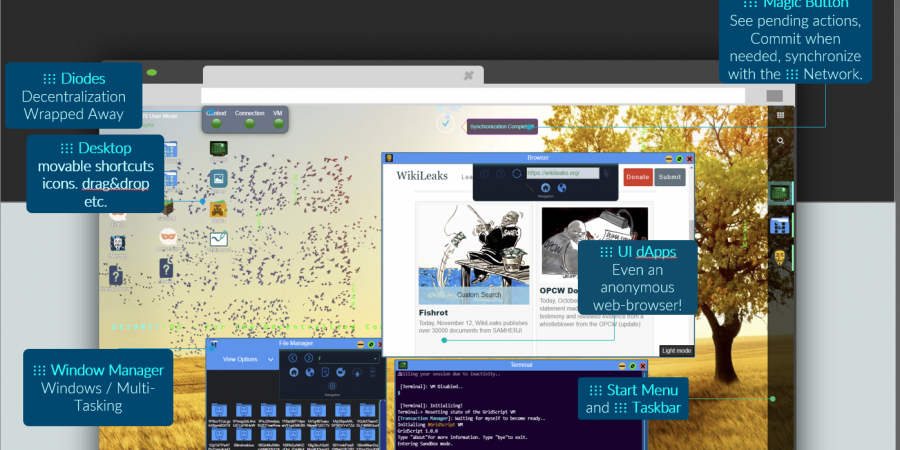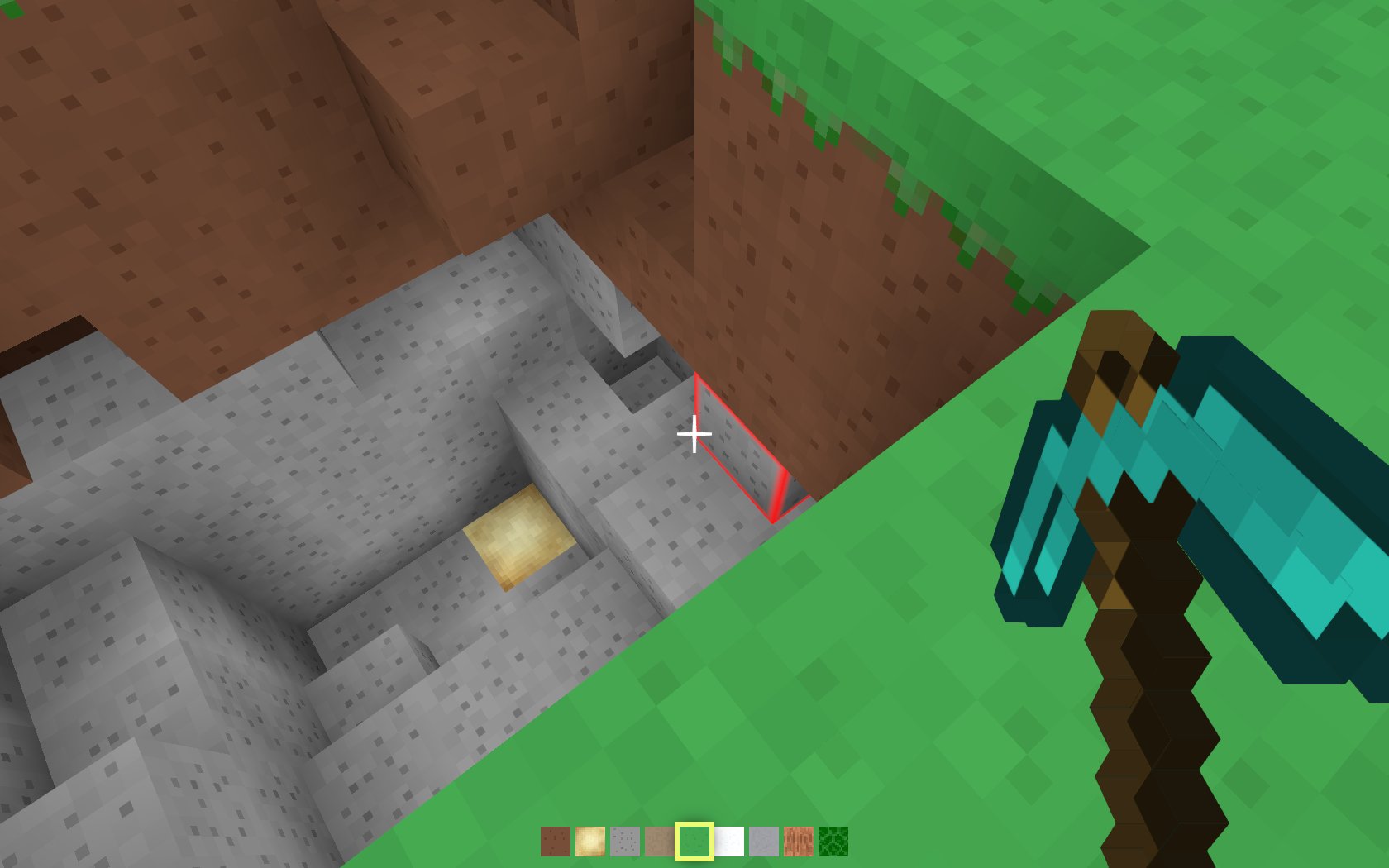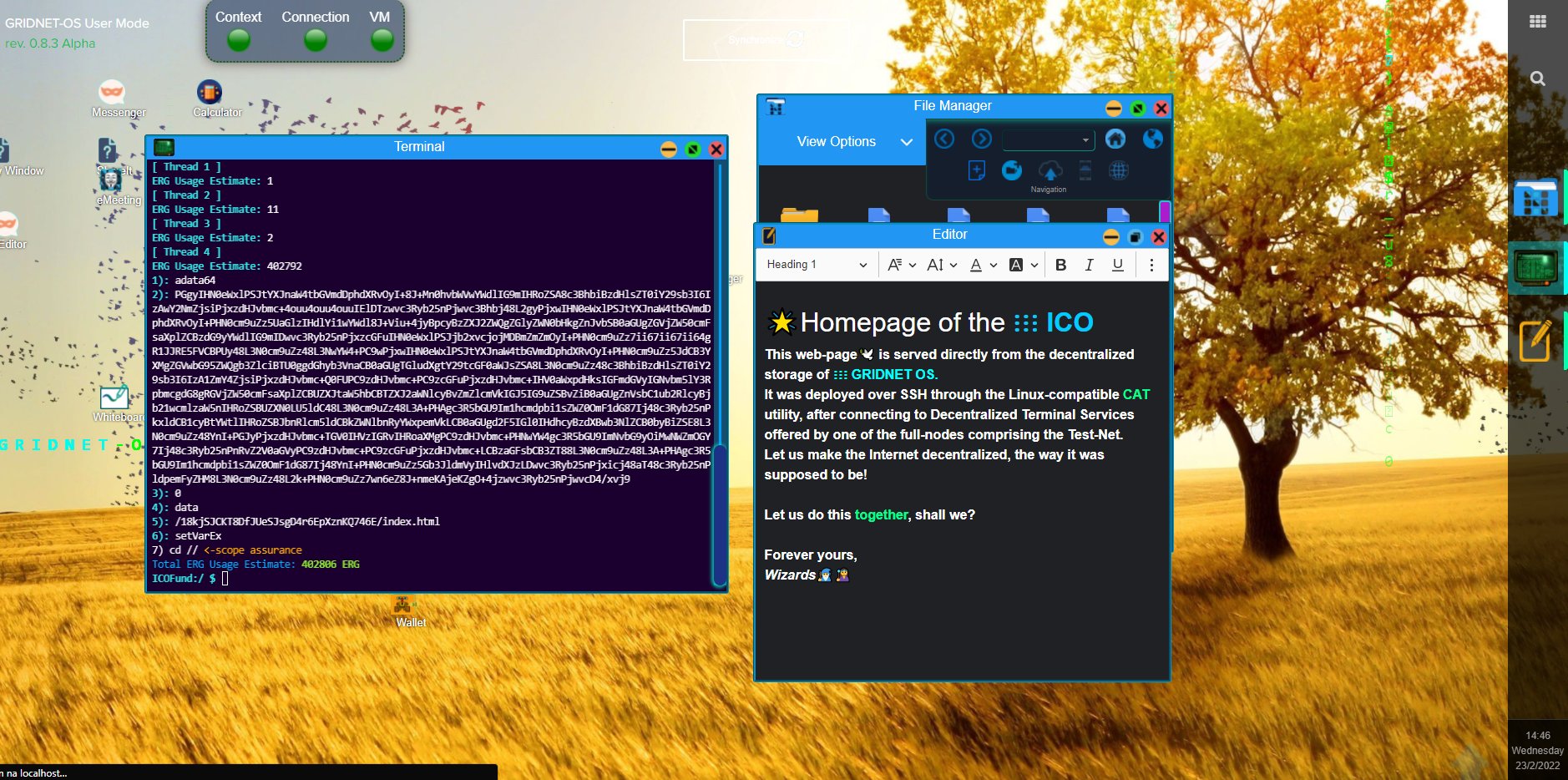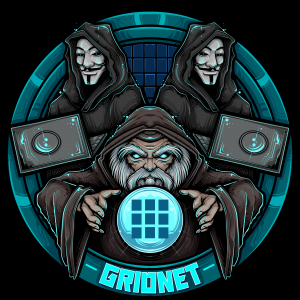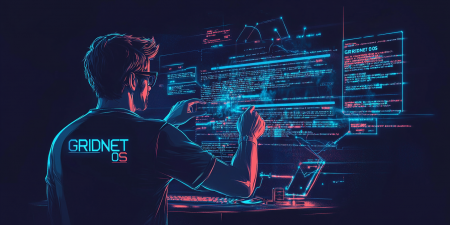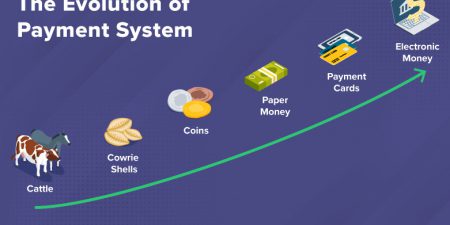 Hey, folks! It has been some time already (almost a month) since we have made the Decentralized User Interface publicly available. Those of you who follow us on social media (Tweets on hourly basis!) – you already got a chance to play around with the ⋮⋮⋮GRIDNET OS‘ Decentralized User Interface.
Hey, folks! It has been some time already (almost a month) since we have made the Decentralized User Interface publicly available. Those of you who follow us on social media (Tweets on hourly basis!) – you already got a chance to play around with the ⋮⋮⋮GRIDNET OS‘ Decentralized User Interface.
Still, even if you had, today we are to be taking you on a journey throughout the technicalities involved. Our quest shall be interspersed with spice, salt and some History of decentralized systems. Buckle up and let us set out on a journey, together, shall we? It will be a rather long journey as before we start shilling the project of our own, we are to take a deep dive into the realms of what has been already known ain an attempt of giving you some solid, unbiased perspective. Some of us have been involved into decentralized state machines, meaning also the source code of Bitcoin since the early 2010.
We have not been rushing with making Tutorials regarding the UI available though. Why is so ? The interface largely reassembles the one known from Windows, Linux and/or MacOS X families of operating systems.
(..) We have learned from the best and we have borrowed concepts from the best. For the benefit of all of us (..) The Glory of Decentralization certainly is Upon Us!
So what can you expect? We ‘took’ Window Manager mechanics from Windows. Try to move windows around, especially against the borders of the screen. Grab a window yet again for it to automatically detach itself. It works good and it feels even better. Hover over active applications’ icons, as these make their way into the ⋮⋮⋮ Task Bar, as applications get launched, – to see dynamically generated ⋮⋮⋮Windows’ previews. We were inspired by Linux as well. The Terminal UI dApp and the underlying #GridScript language – with commands’ semantics largely compatible with its prior centralized predecessor. Many #GridScript commands and utilities come with embedded ‘man-pages’. For these, provide ‘help’ as a parameter to any command or utility. Last but not least, MacOS X lovers ? (..) one may surely find some resemblance with windows’ minimization and maximization icons. Hover over these to see some delicate, subtle lighting effects (..) also the one-click interactions within the ⋮⋮⋮File Manager.
Now folks, listen up! For this article is structured as follows. First, we begin with some history. No ancient times and dinosaurs though. Only Bitcoin, Ethereum and stuff instead.
We discuss what used to be so breakthrough about each of these technologies. Bitcoin and how Ethereum extended upon it. Technologies indeed! Even though some prefer to treat Bitcoin as a religion instead so we better be silent . If you are one of those fellas, we give you all the love and respect but you might want to stop reading like right now for a peace of mind (..) some real, hardened infidels are lurking in the shadows. They are called Wizards and there is no way for them to be stopped. Let just Wizards throw you a Lifebuoy with ‘it is good to know’ written on the side of it.
Going further, we discuss what previous systems ‘lacked’ (previous meaning both Bitcoin and Ethereum) and what users need, like Right Now. That is where our platform ⋮⋮⋮GRIDNET OS comes into the picture, of course. So the idea is for all of us to grab a common perspective so that we get to see how we expand upon what is already available. Keep in mind that this article is focused on the Decentralized User Interface. Besides, we have got all the other crazy cool tech, such us, incentivized off-the-chain and on-the-chain storage, data exchange incentivization, server-less, incentivized WebRTC Swarms etc. etc.
How do we know users need (..) more? Because they keep using ridiculously cumbersome implementations of say ‘NFTs’ on Ethereum. As you are about to discover, things could be way better (..) people keep foreseeing ridiculous concepts such as as ‘Web 3.0’, ‘Web 6.9’ or whatever (..) They know that something new is upon them though (..) they feel it in their bones (..) they need more (..) now somebody has to deliver (..)
To keep your adrenaline levels high, and ours as well , as we go along we are to set out on a side-channel rant about some prominent scammers such as Dominic W. and his ICP/ dFinity, which recently might have even surpassed IOTA (Irresponsible Ones Take Advantage) in their mischievous conceives.
No negative energy though! Just to keep a proper perspective on what is around us. All in the good intention of having all of us vaccinated for the future. For the common benefit of everyone, to better understand and thus to be able to better assess and appreciate (oh Blessed be Thee.. followers of the paths of Decentralization!) the value of what Wizards have already laid out in front of us. It is always easier to assess the value of something when you have something else to compare it to. The attitude of development. The resulting security and decentralization guarantees. Threat models. Some attempt to create hype without caring about proper technology. Others (meaning Wizards, of course) approach a project from a fundamental perspective, researching and implementing things as they go along.
Now, Lo-and-behold as the guiding topic today is the ⋮⋮⋮ Decentralized User Interface.
What are some of its most interesting aspects?
- It is 100% decentralized. As we are about to explain – it is.
- The way it manages to hide away decentralized aspects of the system. Proper experience that was our driving aim from day one. Remember, we came up with custom cryptography constructs ‘just’ to accommodate proper user experience.
- The way it manages to provide a pleasurable experience, while facing uncertainties stemming from the nature of the underlying decentralized state-machine.
- While all that time managing to provide user with relevant information when and as needed (receipts of commits etc.).
(..) There is a research paper pending covering what we have codenamed as the Venice Design Paradigm (..) and Decentralized Processing Threads which play a major role over here.

Venice manages to remain beautiful despite the unfavorable conditions.
Venice is a city of wonders. Surrounded by a harsh environment. Definitely worth visiting. Looks good on pictures, but once there, the feeling might be truly surreal. No wonder prominent people such a Leonardo da Vinci found their inspiration right over there.
In the case of decentralized state-machines, the adverse coefficients stem not from salty waters but from uncertainties. These, on the other hand, are caused by network propagation times, the very nature of the underlying consensus protocol, the intermittent availability of nodes, performance and current load of those.
In this article, we will be keeping things semi-technical, allowing you to get a grasp on how to use the ⋮⋮⋮User Interface but also giving you a fair overview of some of the underlying components. Even though the ⋮⋮⋮UI does its best to reassemble what one may already know, there definitely are some work flows that you would want to get yourself familiarized with.
What would these be? For the most of it, the mechanics of ⋮⋮⋮QR Intents and the ⋮⋮⋮Magic Button. These are nowhere else to be seen. Keep the good vibes, as both of these will be covered in detail by the end of this very article.
Relax and rejoice. In a way it is like getting to know Widows 3.11 back in the early 90s. Adrenaline keeps pumping up (..) soon you are about to push a floppy disk entitled Windows 3.11 right into the slot (..) atop of a ‘single-threaded’ DOS.. ‘surreal’ things awaited. Let us go (…) let us flow (….) grab a cup of coffee (….) would ya
The end-result, as we believe, is more fun and Sci-Fi, rather than cumbersome.
Rendering any future UI dApps to be available on our platform to be as such, as well.
In any case, let us know in the comments what you think and feel invited to socialize at the newly established ⋮⋮⋮GRIDNET OS Community Forums available at https://talk.gridnet.org. Remember, we are always there for you. Should you find any kind of bugs? Should you already feel the calling (..) to contribute to the system? (…) to create an UI dApp of your own? Let the Wizards know and they would do their best to assist you right away! Everything is available through nicely structured JavaScript APIs and then, there is #GridScript operated by full nodes which is largely compatible with Forth.
From the high bird’s eye view, how is it even possible, huh? How on Earth, have Wizards managed to provide a user interface, which is, as they claim,- completely decentralized and available from within of a Web-Browser? Is it for real? Or is it just a lame attempt to create hype around their Gimme’ Your Money-kind-of a- project?
⋮⋮⋮GRIDNET OS allows for ⋮⋮⋮UI dApps. Meaning? Decentralized applications equipped with a ⋮⋮⋮ User Interface now, how about that (..)
It would not be possible at all on a platform such as Ethereum (..) or any other currently available. Even if one attempted to integrate various technologies together.
Trust us when we say (..) It was not trivial. Multi-threading, multi-tasking, all accounted for. In the realm of decentralization. In the realm of web-browsers.
WARNING. Attention Please. Put your imaginations helmets👾 on. Deep Dive Ahead ..10..9…4…. 1…. Let us go back in time. Now.
The Old Days
Once upon a time, a rather disruptive technology came about.
Its name was Bitcoin. Bits and coins. Satoshi was a romantic fella! Afella driven by passion. True to himself and true to the others.
Now, chances are you have already heard about him, right? All right then! One thing needs to be said right now though. Let there be peace upon the person who conceived Bitcoin in the first place as the technology opened the eyes of so many of us.
Satoshi kept asking some prominent people in the fields of macro-economics what their thoughts were. Truth is – nobody took it seriously but for a few people, with folks buying Pizza for 10 000 units years after.
Said it was? Now. Let’s go. Let us flow. The future. It awaits.
(..) Or would you rather stay behind? (..) A dinosaur 🦖 might bite you in your toe, though. Keep that on your mind.
What was (notice the past tense) so special about Bitcoin? How did it manage to rock the entire World🌍 despite:
- no advertising (!) what so ever
- up until today with no people having the slightest clue as whomever authored it?
The answer is: Bitcoin gave power into peoples’ own hands. It was romantic and it was true in itself. Unique idea. Unique implementation.
It allowed for ‘simplistic’ value transfers from A to B. That was all and that was enough.
Is it enough today though? Not so much. People used to find it easy be believing in Pharaohs (..) but once you get to see ‘better coins’ in every possible aspect flying past (..) it is more and more difficult to hold onto one’s ‘faith’, is it not (..)
Satoshi Nakamoto conceived what we call today as a decentralized state-machine. Your computer is a state-machine, Bitcoin is a state-machine – just decentralized. A probabilistic workaround for The Byzantine Generals Problem.
Satoshi’s state-machine while being utterly innovative, it was designed for one thing and one thing only. To allow for value transfers. The idea of a decentralized value. It was the main Satoshi’s obsession as far as we can tell.
According to his idea, when Allice wanted to issue a ‘transaction’, she would prepare a data structure. (..) bits and bytes! the 0s and 1s (..) The data structure would encapsulate an instruction, in the language supported by the Satoshi’s state-machine, instructing each node, comprising the very state-machine – to decrement Allice’s own account’s balance, while incrementing Bob’s account by the exact same value.
Simple? Simple.
But Satoshi had to make this idea bullet-proof. And that was a whole yet different kind of a story, as it always is.
Thus, according to his idea, such a data-structure was to be authenticated, through a cryptographic signature – so that each node comprising the network could be 100% positive that it was indeed Allice who was willing to spend her hard earned assets. Authentication. Authorization. Now, embodiments of many of such such data structures, which we today call ‘transactions’, would be collected by computers (i.e. ‘full-nodes’) comprising the network and packed into aggregative data strictures – now to be called as ‘blocks’. These blocks were to be bound with each otherz in order received, through Proof-of-Work, i.e. with the history of events resting safely on the shoulders of Physics, meaning nature of our Universe itself, protecting the system against double-spends.
The more nodes, the more protected the history of events was expected to be. And it worked. And beautiful it was.
Pure Art. Simplicity. Pure Genius.
An extremely simple, inefficient and yet breakthrough in terms of possibilities apparatus.
Enough to take the Entire unexpecting World by storm.
Today? Nobody cares about Bitcoin anymore. The Magic is gone. Everyone still wants money though. Everyone wants to be satisfied. Everyone wants more. The pandora box has been opened. With demons of Decentralization lurking right into everyone’s eyes. Someone has to deliver.
The Troubles Of Bitcoin
People are not sentimental enough to give up on their functionalities or desires. Ease of use. Stability. Efficiency (people prefer to withdraw USDT from ATMs as nobody even dares to think of converting their hard-earned-money into BTC as it would be inefficient in every tangible aspect). People do not care whether USDT is 100% decentralized or not. It works. It is ‘good enough’. And then there are some state-of-the art implementations such as USDT on Tron Network.
Make no mistake. Bitcoin was not ‘perfect’ (it never came to be) from day one. It never ‘deserved to be a ‘religion’.
Bitcoin contained lots and lots of bugs. Some of us quickly began to gather around its source code though. Fixing bugs, limiting the imminent attack surface (..) crossing our fingers and hoping for the best. Hoping for profits. Oh Yes. Everyone is driven by incentives of some sort. There is nothing wrong with that. Be it fame, money or Passion (hats off to all the altruistic fellas around).
Bitcoin never was a good place for passionate developers to be around though as the project preferred regression over progression.
Why have Bitcoin developers decided to move on? Because each of us treated Bitcoin as a part-time job.
The only possibility of profiting was to either aid large Chinese farms with integration of hardware and software or through spawning Bitcoin nodes of our own, thus participating in the project on the same grounds as every other ‘miner’. Some put on ‘black-hat’ cloaks and began mass producing Initial Coin Offerings (ICOs) on forums such as Bitcointalk (..) eventually even admins were ‘bought’ – with ICO threads sorted in accordance to their will and not popularity.
Thus, at the bottom of everything, the main reason behind the not-so-sudden death of Bitcoin was – the inherent lack of incentives for sustaining the project’s development. For paving onto newer grounds.
It was much easier to fork Bitcoin, change a couple of variables, codename it as a new solution (ex. Litecoin) and call it a day. Almost everyone was happy with unknowns and mysticism all around. It was so dense, one could actually smell it.
At some point, something unexpected happened though. People invested in Bitcoin big-time. Then, some began to make Bitcoin their religion. Mainly for the purpose of manipulating others for the benefits of their own. The more people ‘believed’, the stronger or the more worthy the intrinsic asset was supposed to become, right? Right. And it did. At least for some time.
There was one inherent problem, though.
Religion ≠ Logic
And it was science and logic that pushed Bitcoin to the masses in the first place.
We need to face it. Sentimentalism would never be enough to sustain the adoption of Bitcoin.
Today, it does not make a slightest sense to use Bitcoin as a payment method – the only thing Bitcoin was conceived for and the only thing it could ever do.
In terms of financials, other projects keep shining like diamonds in every possible aspect. Transactions’ speed? Lightning fast (and no, not through the ‘Lightning Network’ branded by Bitcoin). Fees? Negligible. Profits to holders? Assured by the consensus protocol. Better security guarantees, more energy efficient. Everything. Humans are good at improving their creations and so they did.
It is almost certain that Bitcoin is to keep afloat for the foreseeable future to come, though. Why? Lots of value has been pushed into it over the years. It is secure.
For now. Maybe.
Keeping bitcoin afloat costs almost nothing. Just like keeping afloat any other ‘cryptocurrency’. The difficulty of ‘mining’ is designed to accommodate incoming miners (..) as well as with the rise of people’s awareness, of those steadily departing (…) and then (….) in years to come (….) waiting for someone to succeed in performing the first successful attack on the entire network on the Playstation 8 of hers (..) as only a few would then remember that something like Bitcoin ever plaid a major role, giving it a final blow. And then Bitcoin would be gone. Forever.
It is not overly surprising. The fact is, Bitcoin managed to win over the minds of many. Something that managed to replace large banks without anyone’s consent indeed had to manifest some magical properties. Or was it just a piece of innovative technology?
Every programmer knows that everything boils down to a proper piece of source code.
Bitcon’s source code was always public. Lots and lots of people learned from it. Lots and lots of people improved upon it.
There will always be people who promote Bitcoin. The so called Bitcoin evangelists. Why do they do so? Maybe they put their mortgage in BTC same time in the past. One never knows. Maybe they want to become billionaires while lying low. Yet again, one never knows.
We always need to rely on one assumption – that people are rational. That they are driven by incentives. It is naive to be thinking otherwise. People want more. People want better.
Did the wave of rebellion rise as much as it could? It keeps rising all the time, but it carries the flag of Bitcoin no more.
Someone always has to deliver.
And then, Ethereum came about
Ethereum. Chances or you have heard about it, and its captain Vitalik Butterin as well, have you not?
While many noticed that decentralized value transfers were useful, they said to themselves: “Hey! Why don’t we allow for lots more? (..) Why don’t we.. teach our fancy decentralized state machines (…) not only to issue simplistic value transfers (….) but Hey! Liiiisten UP folks! (..) why don’t we teach it to perform arbitrary Turing complete operations! (…) we could then (..) sell it🤑 as a DECENTRALIZED COMPUTER (..) Woah! “
Indeed, at some point these must had been the Vitalik’s own words.
Some of us still remember the slogans marketing Ethereum as the World Computer.
So few understood what was really going on.
Under the hood, the recipe was simple – throw away the underlying language operated by Bitcoin and replace it with something more capable. Capable of Turing-complete operations to be specific. Everything else held constant. At least for the most of it, from an architectural standpoint.
Ethereum succeeded.
Turing complete operations. What are these? Basically, these are about allowing for any kind of algorithms. You may not know this but, even Bitcoin came with its specific programming language. Why might have you not have heard about it? Because it was only good for representation of value transfers, thus nothing much to talk about indeed. Specifically, it did not allow for conditional branching and thus for ‘loops’. No storage and data access capabilities as well. While some dinosaurs know well that there might had been ‘op-codes’ allowing for just very that, alas, once we went through the source code handed over by Satoshi (..) we had disabled all this functionalities right away (..) why? The code was a mess and it was way better to stay on the safe side to prevent infinite loops. Right?
Now, Ethereum was on its way to come in avail. Folks behind it conceived yet another language, now with full support of conditional loops and branches and named it Solidity. Rings a bell? How to cope with abuse (..) the infinite loops (..) the question spinning round and round within Vitalik’s head. It was not spinning for long, though! As the answer was already imminent. Bitcoin was already being modified to charge per the ‘size’ of a ‘transaction’.
The main idea behind Solidity was, that even though one theoretically could implement any kind of an algorithm, execution of each instruction would entail a cost. So to protect the system against abuse. The dreaded infinite loops. The cost was to be covered by the user who invoked a code execution. Had the user wanted to keep a loop running Forever? No problem at all! She would just needed an infinite amount of assets to keep it going, though.
As a side node. Getting now ahead of us. The system needs to be incentive compatible. This provides benefits to both the service providers, protects against abuse and free-riders. Should nodes provide grace periods, full accountability of actions needs to be in place. That is our attitude like everywhere, which also makes ⋮⋮⋮ GRIDNET OS innovative on such grounds as well. We can incentivize any kind of an action, at the discretion of agents involved.
Broadcasted, authenticated code packages? That was not everything though! That would be bitcoin just with loops and branches. Folks behind Ethereum came up with a crazy cool idea to make code-packages, deployed through ‘transactions’, reside on the decentralized state-machine and to make these reusable! How? Simple. Anyone could invoke the already deployed code, multiple times, from newly broadcasted ‘transactions’, as long as processing fees were covered by the caller.
They have named this – ‘Smart Contracts’. Right. ‘Smart’ sounds good. And Smart it was.
Keep in mind though. Contracts. Not programs.
Indeed. Ethereum might had been a leap forward from Bitcoin. Yet still, it was heavily technologically rooted in its predecessor.
From the technological perspective, the biggest achievement and innovation behind Ethereum was the employment of ‘Merkle Patricia Tries’. These are being used heavily in ⋮⋮⋮GRIDNET OS as well. A crazy cool and a crazy powerful kind of a thing. We have pushed that concept to a whole new dimension.
In any case, these delicate changes, along with a few other fix-ups, such as memory-bound Proof-of-Work algorithm – allowed Ethereum to become the next Big Thing.
Someone wanted to deploy a crypto currency of his own? No problem at all. The language, meaning Solidity, would accommodate. The Pirates of Decentralized Seas needed to be proficient in computer science no more. They had to ensure proper strength of their network – no more. Programming? Forget it. Let alone being proficient in decentralized technologies. Now all it took, to create one’s own ‘cryptocurrency’ and to spawn new a new ‘gimme-your-money’ action (an ICO), was to deploy a slightly modified version of an ‘ERC20 Smart contract’.
And many people made fortunes on these, indeed.
Even nowadays, due to an increasing, but not so rapidly awareness, people still choose to include on their Linked-In profiles and CVs an achievement of having established a ‘Token’ – which is supposed to be a symbolize of a bold accomplishment. 🦕Dinosaurs🦕 know their way around the decentralized realm way better though and ended-up establishing the nomenclature of Layer 1 and Layer 2 protocols.

The proliferation of the Ethereum’s state machine was supposed to work for one’ benefit. And so it did.
Altcoins (..) Altcoins (…) Altcoins (..) Altcoins all around!🤗 With the nomenclature being a propaganda all in itself, suggesting something worse than Bitcoin. The big question is – who is the most happy person about Altcoins? Vitalik. Of course. Now, the major thing keeping Ethereum afloat. Ethereum is needed to keep everything implemented on it – going. Thus, it made both developers and users hooked on it. Is Bitcoin needed for anything ? It is not. Bitcoin is about sentimentalism. It offers logic no more. For it to hold value, it needs to be a ‘religion’. Ethereum doesn’t need any of that. Ethereum is about getting things done. And so is ⋮⋮⋮ GRIDNET OS. It just allows for way more than its predecessor.
And again, one might wonder,- is Ethereum going to have both developers and end-users hooked on it for long?
As you are about to understand, it is not. Certainly longer that Bitcoin though.
(..) The major problem? Today nobody knows how to use Ethereum (..) as it was never supposed to be used by end-users per se at least that is how things turned out.
Both users’ and developers’ expectations have long surpassed what Ethereum manages to deliver. Developers would love a decentralized computer. Users even more. Developers would love to have all the fancy data storage APIs, data exchange APIs, window manager APIs, file system APIs available at the palms of their wrists. So that they could keep composing beautiful symphonies. So to keep the end-users satisfied, so to keep the money flowing. Ethereum it does not deliver. At least no more. Thus, developers end up doing what they can, which is – exploiting Ethereum’s capabilities as much as they can and offloading ‘the impossible’ to other technologies. The end result never is what it could have been. Developers end up with hybrid centralized-decentralized architectures that cannot scale. The end result rarely is what either developer or end-user would have truly desired.
Recall that Ethereum aspired to become the world’s universal decentralized computer.
Is that very vision not a far cry from what Ethereum ended up becoming? People noticed. The promise was not fulfilled. At least not entirely. Too much had to be offloaded ‘to the outside’ and even once it was, the end result never looked or felt like a true application. Lots and lots of gluing parts are always missing. Some ideas were to remain in the realms of wishful thinking entirely.
(..) our beloved Wizards come in rescue though (..) armed with the guns of computer science and cryptography (..) day have been striding each and every day since the early 2017. Right on YouTube LIVE, as over 35 TB of LIVE programming sessions have been recorded, available for your consideration at all times.
Ethereum was yet another Big Thing. On the grounds of its own. Vitalik and friends noticed the gap and successfully filled.. some of it.
But was the gap filled up entirely? Not even close. Today people demand decentralized services and decentralized applications of any kind imaginable. Decentralized Web, decentralized games, decentralized YouTube, decentralized Twitter? Everything! Do not be afraid to imagine. Do not be afraid to create.
Now you may ask yourself why, oh why, are there no additional breakthrough functionalities being added to Ethereum?
And the answer is exactly the same as with Bitcoin – the lack of proper incentives.
Vitalik and his friends departed from the scenes on the Yachts of theirs long ago (well and honestly earned! you remember that). The product works, and it works well. Life is so much better having fun rather than sitting indefinitely in front of computers once you got what you have desired. Some just choose to hit on a break.
It would be unfair to demand everything from a single team. The species needs to be moving forward though. And somebody has to deliver.
Whatever the reason, the barking Fans of decentralization were thrown a play-toy-bone with “PoW vs PoS” written right atop of it, so to keep arguing among each other. The passion was gone. The progress was no more.
The Human Nature
Humans never stop. They want More. It is just the question of who delivers. It is not that easy though. As time goes by, the bar of requirements gets set higher and higher. More and more brain-🧠-work needs to be performed to accommodate the newly emerging desires. Maybe some day AI would be doing the tedious work for us (..) surprising us all with newer and newer possibilities. We are not yet there though. Or are we ? At least not in the realm of software architectures. Our system intrinsic AI, Hexi, she is not hearing us… right?
But wait a sec! Are there not any shortcuts to be taken ? One lives only once, right? And there are no guarantees as of yet, that we are to be living forever. One wants to have a good life. But for some, being a developer, despite good salaries in the industry – it is nowhere close to be enough. Not everyone is equipped with a brain capable of actually paving and orchestrating new, breakthrough technologies the uncharted territories. These territories are lurked through by both the developers and investors.
(..) seldom an interesting, useful ‘crypto / decentralized’ app comes around. How about a fully decentralized app that would have replaced a centralized one? Like a one running on Windows or MacOS X? Have you heard of such?
In uncharted territories, dangers lie in every corner. What if someone mischievous attempts to ‘deliver’?
So much easier to orchestrate a SCAM.
Are people familiar enough with computer science to tell an honest project apart from a fake one?
The worst case scenario? A computer 🥼 fella, one knowledgeable enough in the arts, using his ‘knowledge’ to trick others into jumping out of their pockets. His would be telling fascinating stories composed of a mixture of facts and fiction.
Cryptography is not that easy. In fact – it is not. Decentralization is about cryptography, threat models, security, networking. A change to any meticulous detail might have catastrophic consequences. Would it blow today.. or.. in a year from now?
What was the main factor behind Bitcoin’s success? Decentralized value detached from governmental control.
What was the main Factor behind Ethereum’ American dream? The increased functionality set.
(..) what was (..) shalt be in the past. And let us Rejoice!
Undeniably, people want more. They love Facebook, they love Twitter, they love YouTube (..) web browsing (…) gaming, etc. What is the common denominator of all of these? These are services. These are applications.
At the bottom of everything. These are things allowing for a proper user experience. These make the end-user feel pleasure. Whether it is an iPhone or YouTube, – in the end, it all boils down to brain-chemistry.
Question is, why don’t we make all of these (services) decentralized? The answer- because no proper integrated framework used to be around. Currently we are having people seeing a potential mixture of Web technologies with decentralized state-machines. We are to make a yet another huge leap forward. In fact, – we need to. The sparks of people’s awareness only just began to glitter. Soon these are to be in flames. People do not want to have their Twitter accounts suspended. They do not want, while being in their 50s, having Good Pappas🎅 sitting right above their heads telling them👶 what they are supposed (not ?) to watch, read or hear. In fact, those Pappas🎅 might be so good at concealing their doings that we might never get to know. And usually we do not.. get to. One might have a free email account on GMAIL but it is up to GMAIL to decide whether you would get to see an e-mail. There is a SPAM box, right? Right. But did you know that GMAIL decides to ban thousands of domains on daily basis? Not by IPs. By domains. Emails from these domains not even end up in your spam folder. Pretty powerful mechanism, is it not. And of course GMAIL knows best. Always🤗
Decentralized YouTube, Twitter, Facebook (..) these are just ideas of particular applications. Wizards, instead of focusing on these, they shalt be focused on making these ideas easily implementable. So that developers would want themselves to get hooked right onto the Wizardous technology. It should hold the same for end-users.
Being hooked on something beneficial ? It is Good. it feels Good.
Microsoft’s and Apple’s business models are similar. Rarely do these companies deliver concrete implementations of specific solutions. It is not only about preventing from being sued under fair-competition laws. They are mostly concerned with the underlying platform, delivering to developers. Creating the market. Developers get hooked and so do the users. Nobody even dares of thinking of developing an operating system of their own (Wizards are a different story). Developers need to get the work done the easiest, the least expensive way, all other things held constant.
Google, Microsoft, Apple, Amazon (..) these companies were established when there was no cryptocurrency around.
An idea And the Reality
Imagine that you are a developer willing to implement a game. Today you wouldn’t be able to implemented it. What you could do instead would be a game with decentralized elements. Or what if you would be willing to implement a decentralized exchange with a nice..nah.. with a crazy cool user interface? After doing some research you are most likely to decide that you are best off using Ethereum for a smart-contract and for everything else you would be forced to mix architectures and technologies. To mix decentralized and centralized technologies in particular. Ethereum would not deliver incentivized off-the-chain storage, it would not deliver real-time processing, it would not deliver framework for the UI, it would note take care of communication had you ever dared to employ incentivized cross-browser communication exchange for whatever reason.. nobody ever heard of anything like it.
So you would fallback with your expectations. Have assets stored on the virtual private server of yours… maybe you would try bringing into the picture something like the Interplanetary File System and then you would quickly come to understand that it would not be able to incentivize delivery of data from nodes to users’ web-browsers. Forget per-byte incentivization (..) and you just were about to create a decentralized YouTube, right? But you wouldn’t. The technology is not there.
(..) or is it? (..) Wizards waving their hands at you👋Not wands since that might evoke some dirty thoughts of yours indeed. (..) Wizards have arrived from the lands of bits and bytes (..) and they have delivered.
Decentralization most likely was the main factor behind the very idea of yours. No matter what you end-up doing, your project would be always doomed to lose to future competition. Had one day a white-hat scientists managed to provide better decentralization and threat model guarantees – all other functionalities held constant. Bitcoin can afford to be driven by religious feelings. It was the first, it is surrounded by sort of a mysticism. Your project? It can not.
The Decentralized Operating System
(..) Wizards they have interpolated their way into the future (..) They have managed to come up with the very first decentralized operating system (..)
An operating system which does not only offer Access to a decentralized Shell, but also comes equipped with a decentralized user interface, reassembling the one known from centralized solutions.
It allows for an outstanding experience by allowing for applications equipped with user interface in the form of windows.
Apart from delivering user interface mechanics, it also delivers all the other substances a decentralized applications’ developer might ever need. Decentralized incentivized Sybil proof storage, decentralized cross browser communication, audio video streaming, real time input processing, multi-threading and concurrency management – all are just to name a few.
All these integrated into a single, coherent package which we call a ‘decentralized operating system’.
Now the main question is, would it be possible to build something like this on Ethereum?
The short answer is – no, it would not.
(..) (..)But but but but but(..) Ethereum allows for Turing-complete operations (..) so how come, could it not (..) (..)
Nerds! Let us hold our horses! Hoooooooold it. Here it comes. It is always easy to say that you are better than somebody else, is it not… But once you have a good point and once you deliver better, then that is GOOD. It is called ‘progress’. Let us go. Let us flow. the future of decentralization. it awaits.
All Ethereum can do is to process authenticated, meaning signed code bundles. Transactions. It is something, Still, Ethereum nodes cannot do anything else.
Come on. But is it not enough? What could we ever have wanted? The better question is – what would a developer need to make decentralized applications, reassembling those on Windows / Mac OS X, a reality? What would a developer, willing to create a decentralized YouTube ever need? Ease of use? Experience? We have covered all the bases.
- Real-Time input processing. Once you fire up a terminal on Windows, you do not need to wait a couple of minutes or seconds for processing of the next key-press to be possible. Once you create a file, you want the very file to be editable at the very moment. If, there is a game which is supposed to deliver rewards say in cryptocurrency, you want these rewards to be issued and available the very moment player grabs an in-game-gold-vein. Anti-cheat mechanics? These also need to operate in real-time. That is, if you are to implement a modern arcade game and not some sort of a ‘hacky’ chess game powered by blockchain. Although that might sound FUN to implement from a Wizardous perspective (..) the end user not necessarily needs to be a nerd. In short, Ethereum cannot deliver anything close. The only viable solution would be to mix technologies. To mix centralized and decentralized architectures. There would then be a centralized server processing users’ inputs, taking these into account and..that is where problem would begin to emerge. Would the user need to trust that server ? Would the server need to come in possession of the user’s private key – were the results the end to affect the decentralized state-machine? And so and so. The only viable solution thus requires an entirely new architecture.
- Storage. The app needs to store data. It might want to store data either at full redundancy, which of course might be very costly – or at a lower redundancy guarantees. YouTube videos certainly do not need to be stored at full redundancy. Ethereum allows only for the first type of a storage. But now, if developers desire to implement decentralized YouTube, storage of all the videos at full redundancy at each node not only would be impractical, it would be infeasible. So yet again the developer is forced to research and mix technologies. She would likely grab whatever is available, such as, the already mentioned Interplanetary File System and connect it somehow.. hopefully.. with Ethereum, but then – where would she put all the incentivization logic, all the user interface, all the JavaScript code responsible for file uploads, comments, socializing, likes, etc? She would need to mix technologies all over yet again. Not only tedious. Sometimes impossible. She would spawn a server of hers, running node.js , nginx, apache or whatever and go through a tedious work of mixing everything together. Who would be having control over the ‘server’? Would the project die, as soon as, the servers were hacked or she moved out of the project? Proper user experience would be the least of her worries. She would be happy enough had she ever managed to have all these pieces connected together. She would never worry about romantic, true Decentralization guarantees, or incentivization guarantees, threat models etc. such as having Sybil-proof rewards for peers for having video-frames on per byte basis delivered, as she would stem from the assumption that such tech as of now simply out of her reach. And in the end the very idea of hers – it never gets traction. We all know it.
- User Interface. Ethereum never was concerned with a user interface. It pushed its way forward away from Bitcoin (..) and it stopped almost as soon as it did. The authors began making its inherent Proof-of-Work vs Staking debate the main dilemma everyone should be concerned about. Those with an incentive to keep Ethereum afloat would tell you that there is no problem as one could always deploy a smart-contract on their state-machine and have external code, one possibly providing an interface interact with it. As it allows for Turing complete operations, then theoretically everything is alright, right? Wrong. She ends up needing to integrate technologies which have lots of gluing parts missing. She would need to be one of the smartest computer scientists in the World to make it all attached. ⋮⋮⋮ GRIDNET OS? It delivers out of the box. Just like Ethereum allows for automation of altcoins’ deployment through ERC20 contracts – the major thing Ethereum is good for, GRIDNET OS provides to developer an entire eco-system very every aspect of her application she might ever need. Ethereum promotors would close their on the very fact that a mixture of providers never is as efficient as a comprehensive solution, let alone being concerned with whether the result is secure let alone decentralized.
- File System. Ethereum lacks anything that could come close to what we know as a modern decentralized file system. Sure, one could mix technologies, etc. But the end result would never be as sound as that of an integrated one. Interplanetary File System? Forget it. ⋮⋮⋮GRIDNET OS boards a file system of its own, with full-blown access-control lists, and ownership privileges, modifiable through Linux/Unix-compatible CHOWN, SETFACL and GETFACL commands. That is right. Have we forked Linux? Have we forked NTFS? Nope. Everything has been implemented from scratch bottom->Up. Think of NFTs. One day she thought to herself that it would be cool to associate file permissions with images. Decentralized Art. Great. Now we all know how cumbersome the end-result on Ethereum actually is. Sure, then there are various services such as OpenSea attempting to wrap around what is available from Ethereum but in the end it is a difficult to integrate towards new directions when… Those parties have no incentive to cooperate with each other. ⋮⋮⋮GRIDNET OS boards full blows Access-Control Lists enabled a decentralized file system. You may read more about it over here. Over there, you may deploy an NFT of your own, assign ownership privileges and see the NFT of yours delivered to a web-browser of yours. Everything 100% decentralized.
- The concepts of an applications threads and processes. Ethereum lacks any of these. Ethereum can execute code packages deployed on its state machine. These packages are called smart contracts. That is it. No way to create instances of applications let alone UI-equipped decentralized applications, then let alone further for UI applications coupled with multiple threads, let alone for allowing such threads to be hosted by multiple nodes so that everything is decentralized and so and so. The story goes. As it always does and you catch the flow.
- Incentivisation. All the above mentioned functionalities need to be incentivized. ⋮⋮⋮GRIDNET OS provides incentivization through State-Less channels taking use of Multi-Dimensional Token Pools (research publication pending) which are some of the Wizardous unique conceives. One can reward for having elements of the UI delivered, for acting as an onion-routing data-proxy, for having contents of web-pages delivered in an anonymous way and so and so. The story goes and then it flows. It is all already implemented just waiting for you to take it for a spin🙏 Sample UI dApps are all ready, just waiting for you to be discovered. Some of the available UI dApps are to be described in detail by the end of this article. So let us keep it cool, let us go, let us flow. The future of Decentralization – it awaits.
- Deferred Authentication and Replication Mechanics. So, if the user is allowed to interact with the system in real time. We need mechanics allowing for Authentication and Replication of the results of these actions as and once needed. Since Ethereum does not allow for the former, it never was concerned with the latter. Thus, we are taking things into a whole new dimension of possibilities, this very functionality alone. We have conceived an entire architecture, from the grounds->UP rendering all of this feasible. Here, the mobile app enters the picture. When needed user simply scams a QR code and all the sophistication is effectively hidden away. It ceases to exist, as far as the user is concerned.
- Things that are needed by ..
Web 3.0 (salt incoming!)
Web 3.0.. alright then! Now what a lame manipulator came up with such a naming convention? Who is after some easy money, huh? Truth be told, turns out that almost everyone!😄 The higher the number, the better the tech ! 4.0 5.0 6.0.. Right?😎
Why don’t we make it like.. Web 6.9.. right away now that is interesting.. 🤪 (..)
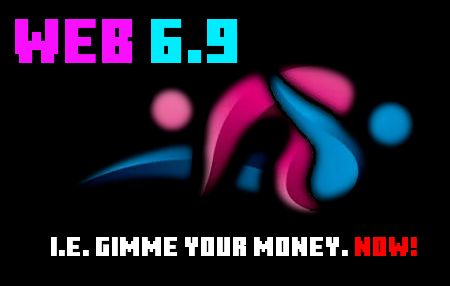
It will make you feel So Good…
Nothing bad with numbers, though! If a number is to help inspire people and new movements – let these be! Alas, meet the fallacy of the human mind and how these are used for mischievous purposes.
Maybe not everyone is a proficient scammer such as Dominic W., or fellas from IOTA (Irresponsible Ones Take Advantage) but lots and lots of people tend to employ easy manipulation tactics in order to gain fake edge over their ‘competition’. Mixing facts with fiction. Say by incrementing version numbers. Suggesting a new revolution, new technology, any kind of a thing that could suggest the next Big Thing so to have people jumping out of cash.
But was Web 6.9 conceived like today? Or is the Web 6.9 being built like right now?
Truth be told, all of us have been using more than the fundamental technologies behind the World Wide Web now for well over a decade. We watch movies, we listen to music, we connect to remote computers, we access Virtual Private Networks. The list goes on and on! So why oh why so much fuss this time? Why so much fuss once the web meets decentralization. Because so many people around are after easy money. Because technology never was so close to speculation. Technology? It rarely is. Science? Forget it. Most of the people act as promotors, organizing ‘Web 3.0’ conferences etc. most often they never had any kind of a computer science background what so ever. They are after a cut from adverts, for participation fees, etc. etc.
And for this, they need sexy , bold-sounding labels.. let us now thus stay at Web 6.9! it looks way better and is supposed to account for even better tech, right?
Now if someone wants to imply to be Web 6.9 Leader or whatever, he better rationalizes it the right way. He better delivers instead of making empty promises and manipulating people through mixing facts and fiction. Once you think of it .. “6.9” innovations? Now, it’s going to be more fun than ever!
And the Rant Begins (and spicy it becomes!)
People noticed that the gap was not fulfilled by Ethereum. Instead of going back to whiteboards, they began taking shortcuts so to make some easy money on speculation instead.
If, things continue to go that way developers would not be joining say Google’s Dev Team (cheers folks!) to earn some ‘good money’, as presumably perceived by the majority of people on our Planet, but so to be able to then write in their CVs that they are ‘ex-Google’s Project Managers’ and kick start multi-billion scams of their own and instantly ‘retire’.
Web is the acronym of the World Wide Web. It used to be only about delivering text-contents defined in a markup language called HTML. Then we began adding additional functionalities, extending upon what was available yesterday and so and so and the story went on and on.
But. What is there at the end of such an evolution ? Let us interpolate into the future! The answer is – services delivered at required security and architectural requirements. How do we define services? The definition would need to account for teleporting our minds to computers or metaverses. It would always be about a service though. As far as numbers go, Wizards would consider anyone getting into playing around with numbers added to ‘Web’ as right-away-scammer-candidate. These terms are far too broad. Should be left alone to people who present proper scientific papers and implementations. We cannot allow scammers such as Dominic W. winning over people’s hearts just because they know their way around technology well enough to be mixing facts with fiction. Such people are stubborn enough that they would continue even when faced with court cases and up until they land behind the bars. Watch ‘Inventing Anna’ (available on Netflix) to get to have an idea.
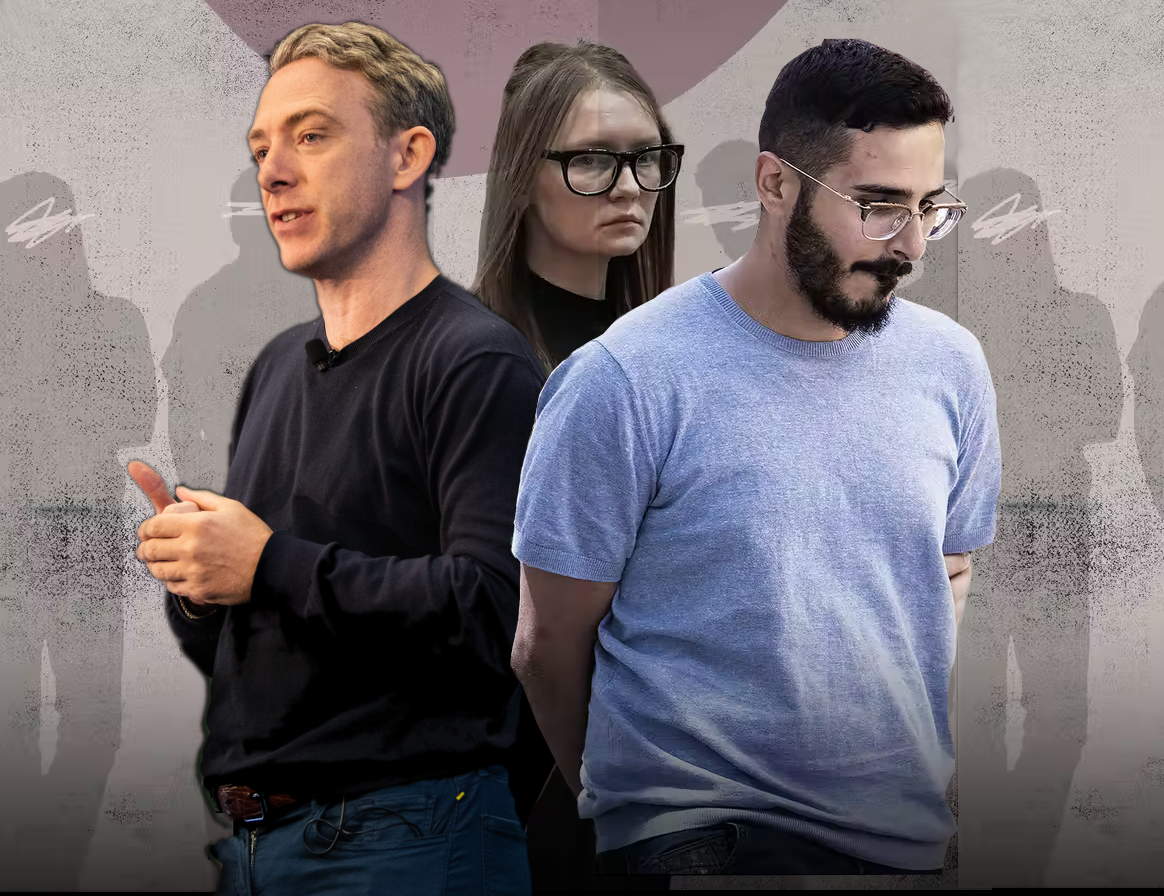
(..) scam-artists are lurking in the corners(..) If anything, one may surely admire how they stubbornly manage to play others whenever and with whatever they are faced with. Fun to watch on Netflix but doom upon those who decide to ‘work with’ these.
Dominic W.🤡 promised a decentralized computer. Now, do you see any resemblance with Ethereum’s marketing take? Dominic knew the gap was not filled. Not in the way it could. Not in the way people would love to be seeing a decentralized computer. So what did he do? He spawned a couple of Virtual Private Servers and began, scrapping JavaScript games found on GitHub so to market these as… being made possible through the Decentralized Computer of his. Like a Boss😎

HexGL game marketed as achievement on the main page of ICP. Code stolen.
The original repository from where Dominic it can be found at https://github.com/BKcore/HexGL.
It holds true for every other graphical application made available by ICP.
In the end, what he delivered was a couple of virtual private servers running nginx with NodeJS. In order to create the impression of allowing for graphical enabled applications, he began to scrape JavaScript code from all over the GitHub suggesting that these are enabled for by the Internet Computer he has conceived. Dominic W. never was concerned with having the technology properly designed. He never cared about any details. His ‘product’ rewards nodes through a table in excel, and also reward for nodes that are offline.. That is right. How many Venture Capitals did he manage to trick? Do your research. All he ever cared for was to gather money and to create hype and confusion through a mixture of facts and fiction. of course the ‘network’ of his does not accept new nodes as certainly any 15year old kiddo (with respect to all of you!) would exploit all of it within a day due to lack of any kind of a consensus of Sybil proofness.
Dominic would suggest that nodes are incentivized for performing computations. And when someone ever cared to look closer, it would turn out that even.. nodes that were powered off would be rewarded indeed. He would not allow for new nodes to join the network because, of course, any reasonable hacker would exploit the system of his within an hour as so Sybil-proof or computation accountability mechanics ever were supposed to be in place. And Dominic W. would continue through the army of Twitter bots he owns to suggest that Web 3.0 = ICP. And the story rolla.
(..) What happened wrong here? How did Dominic manage to fool some of the notable Venture Capitals? He did. (..)
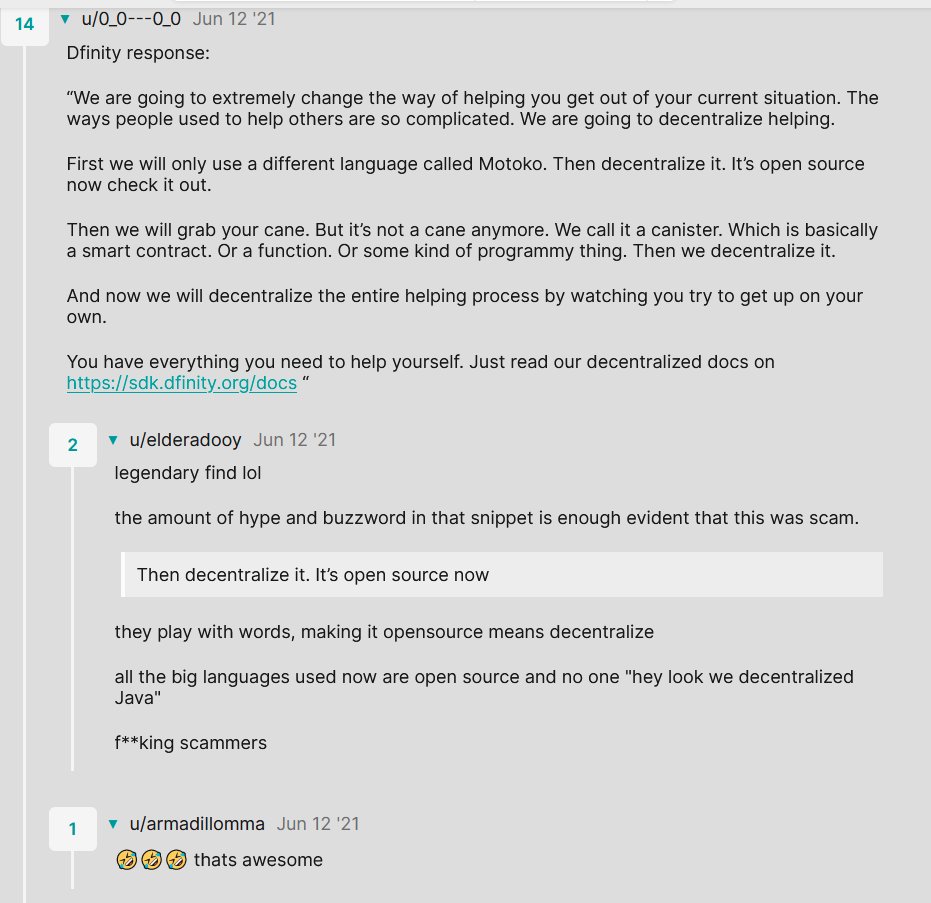
An epic fragment of a conversation between ICP developers and community members.
On one side, we have got technology. On the other hand, we have people willing to earn money. Not everyone is a computer scientist though. And cryptography and decentralized protocols are not an easy thing to assess, even for Dinosaurs, as it turns out sometimes even for technology.. decentralized technology oriented Venture Capitals.
So should only scientists be encouraged to invest their hard-earned money into the crypto space?
Of course not. But remember to always do due research. If, someone claims to be delivering a decentralized computer, pay attention to the details. Ask your nerdy friends what they think of it.
Never invest in promises of strangers,
What To Watch Out For
Is a (stolen) JavaScript application.. running from nginx (a popular web-server software) a decentralized graphical application? It is not. It never possibly could have been.
If, anyone decides to use Web 3.0, 5.0 or Web 10 nomenclature.. watch out and be warned as the person in trying to play some cheap tricks with your mind., and are you up for it?
The second group of people to watch out for are promotors. These are not fellas claiming to have conceived a breakthrough. These are ‘just’ trying to earn a buck by selling products of others often under the cloak of educating you. These folks are not less dangerous. In each country, there are blockchain and decentralization ‘evangelists’. Now, we got ‘Web 3.0 evangelists. They employ themselves in the arts of deception, organizing various kinds of meetings, conferences and trainings. Each time a new hype word emerges, they rush towards like mad monkeys, read a couple of pages on the Internet, find speakers (which they usually manage to find for free among the aspiring local specialists, so to cut on spending’s) and.. they collect profits. From whom? From attendees, from advertisements, from promotional presentations. (no matter the technology as long as they pay). Indeed, in the end they usually do not care about decentralization or proper tech at the slightest, having no clue about the underlying details of any technology being presented. Thus, if you ever decide to attend a conference related to ‘blockchain’ etc – go to a scientific one. Sponsored by organizations such as IEEE or ACM. That should immensely improve your confidence in what you are being shown as you could rest assured that each and every paper was peer-reviewed by the scientific community. Not buy money-hungry organizers trying to make a buck. Not by a bunch of fellas after easy money.
So yet again. Whom to trust? Do your research. Read about decentralization, learn how these protocols really work so that you know which questions to ask. If you are a Venture Capital, hire appropriate technical folks. Now of course Venture Capitals wouldn’t get hurt as long as they sells at an appropriate moment yet still – having limited amount of assets… a proper technology it is only on its way.. and you better have your assets prepared.
The future belongs to decentralization. There is no doubt about that. Today, humanity wants to make itself immortal. Humanity wants to get rid of kings. It got tired if these. It needs these no more. It is good on its own.
The problem is, decentralization is not yet being taught at elementary school. Probably it should. The progress happened way too rapidly for the knowledge of an average Joe to accommodate so that he could make proper investments decisions on his own. As of now, the technology behind decentralization is a black Box not only for an average Joe but for many educated people as well. As we just saw it holds true for decentralization-oriented venture capitals as well. It is cryptography, it is security, it is threat modelling. So not only does Joe need to be guided. But Joe can certainly spend some time researching some basics behind decentralized technologies so that he does not fall into traps set out by Dominic W. and the alike.
Everyone makes mistakes. LUNA was exploited. There were no bad intentions though. Everyone makes mistakes. Yet still, there are those scammers such as Dominic W. and people behind IOTA (Irresponsible Ones Take Advantage, as we have covered in our previous articles) that would keep mixing facts and fiction up until (or maybe even after?) they land behind the bars.
There are lots of true, honest projects out there, such as Monero. As soon as it gained popularity, though, governments did everything they could to pull it under the rug. Feel free to do research on your own, which exchanges meekly obeyed and draw conclusions.
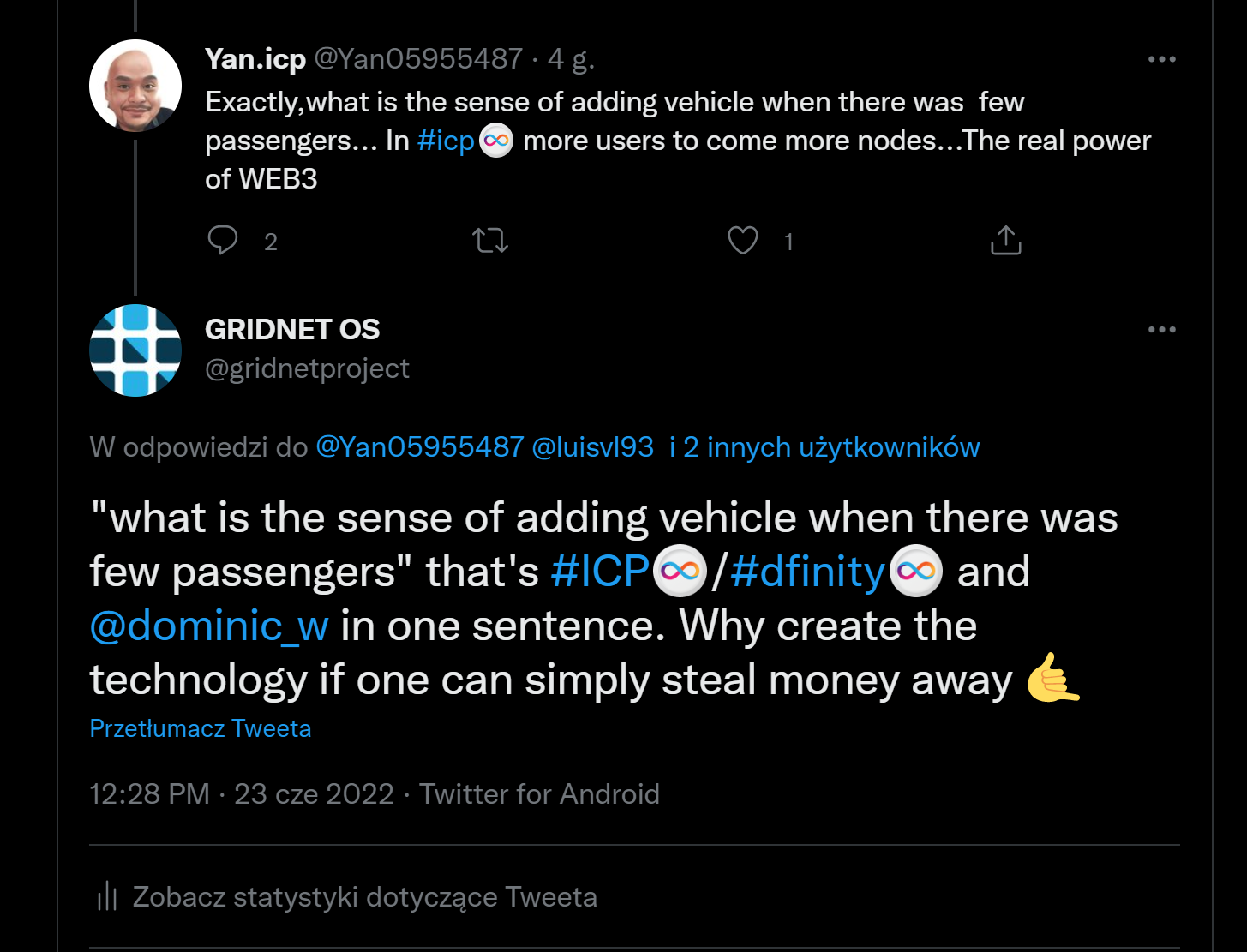
Talks with ICP ‘bots’ fake account etc.
The above is when ICP was asked about why their tech is not Sybil proof and why they do not allow new nodes to be created. ICP in one sentence indeed. Those scam-arts deserve an article of their own in the funny talks section probably. Remember that for conversations such as these, we’ve recently established the ⋮⋮⋮GRIDNET OS Community Forums available at https://talk.gridnet.org
Time to Rejoice !
End of Wizardous propaganda. Time to Rejoice!
From the Wizardous Perspective the only takeaway from the ‘Web 6.9’ debate is that PEOPLE ARE HUNGRY FOR MORE.
People know that something new is upon them. They know they access most of their things through we web-browser.
Now the main question is. Who is going to DELIVER?
Now. What is to be delivered? The most comprehensive, integrated solution for the decentralized user’s needs. It needs to accommodate both users and developers. In the end the latter are the ones who are to be receiving lots of love as well. These are the people who DELIVER new ideas. New solutions. These folks, the lovers of bits and bytes, the 0s and 1s (..) they need to have proper, honest, bullet proof technology at the palms of their hands. The more they have the better for everyone. We need to be making developers hooked on our technology. Is there any wrong about it? Of course not. As long as they choose to be hooked onto our hook. As long as they deem our solution to be best not in town but in the entire f*** World. We cannot be after anything less.
Anyway, it is Good to be Vaccinated against bad things, is it not?
Now, let us now dive deeper into the User Interface for that was within the title of this very article!
Let us take a look at what the beloved Wizards of ours came up with, shall we!
What is the UI made of? Magic? HTML, JavaScript, WebGL, Shadow DOM, WebRTC, Web-Sockets, QR-Codes, GridScript, BER-encoded data exchange and so on. Sounds like Magic indeed. If it does, grab your nearest Nerdy friend to decipher these. Show him or her the article and we will take him or her by hand. If you haven’t got a Nerd around, rejoice anyway as we’ll be trying to keep it as simple as it gets.
In any case everything was designed for you not to be in need of reading any of this at all. As has been already mentioned, the system does its best to reassemble the experience you are already well accustomed with when using Windows, MacOS X or Linux. Thus why don’t you feel at home..
Indeed, we are to relax now so let us keep going! Vanishing into the Wizardous realm of bits and bytes (..) the 0s and 1s (..) with new decentralized possibilities emerging right before our eyes (..)
⋮⋮⋮ Bootloader
Once the user connects to any node, she is presented with a bootloader. Sounds bold, right?
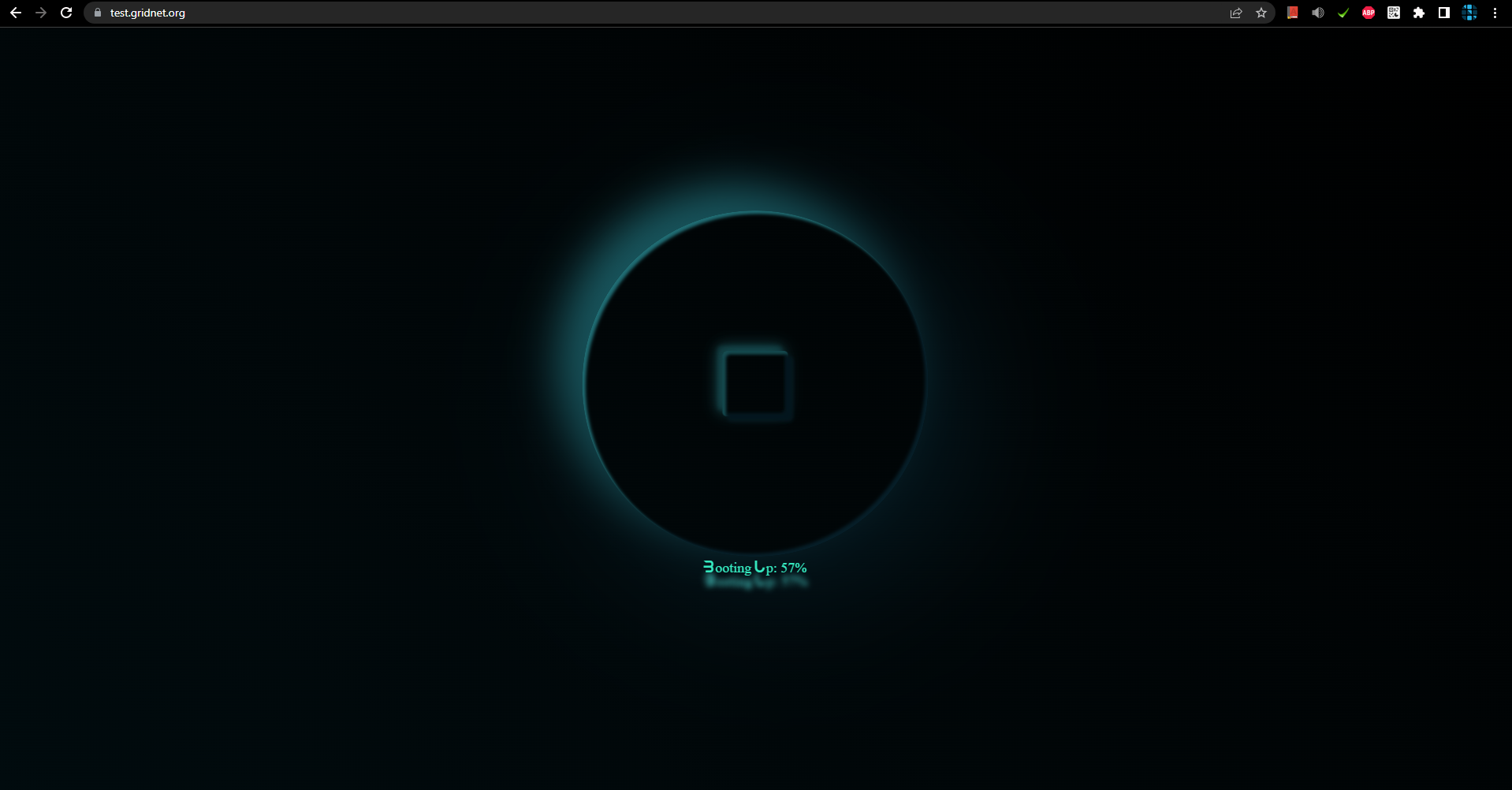
Bold it may sound but definitely it looks even better!
If you are a Nerd (..) just like the person writing this article (..) feel warm at heart as we do understand that you are scared. A ‘bootloader’, huh? Right.
We all remember crazy times when we used to mangle with bootloaders of Amiga and the very first IBM PC computers. In fact, one of our folks still has a numerical co-processor hanging from his sack. Anyhow, Bootloader is the main entry point to almost every operating system as we know it. Here, it also holds true.
Bootloader? It delivers. Everything needed to get you going when accessing the system through either the Decentralized User Interface or SSH.
With SSH, a full node prepares an instance of a Decentralized Processing Thread. That beauty, under the hood, boards an unique instantiation of a Merkel Patricia Trie (cheers to Vitalik!), representing a Sandboxed State of the entire Decentralized State-Machine. It also prepares a Shell (boarding a #GridScript command interpreter) to get you going. All the user’s instructions are processed in the scope of the main thread, then ready to be committed to the network at the user’s discretion. One could then spawn additional threads, but it is in the Decentralized User Interface where the Decentralized Processing Threads truly shines.
With the Decentralized User Interface, get even more interesting. It is when it is the Bootloader’s responsibility to allow for all the assets, meaning all the components running or showing within of the web-browser indeed to be loaded in a decentralized manner. Bootloader is capable of fetching all the assets from possibly multiple nodes. Oh yes! Assets for a single user session may be delivered from multiple nodes at once! We called it a decentralized User Interface, remember? Full node discovers peers through Kademlia and makes these available to the JavaScript-based sub-system.
As the assets, including code packages, images, style-sheets, are effectively delivered, the integrity of these is verified and graphics shown on the screen are dynamically updated with all the crazy cool shadows and stuff. Should a problem arise, the Bootloader would toss another data-delivery node immediately and resume from there. In the worst-case scenario, the system would simply refuse to boot.
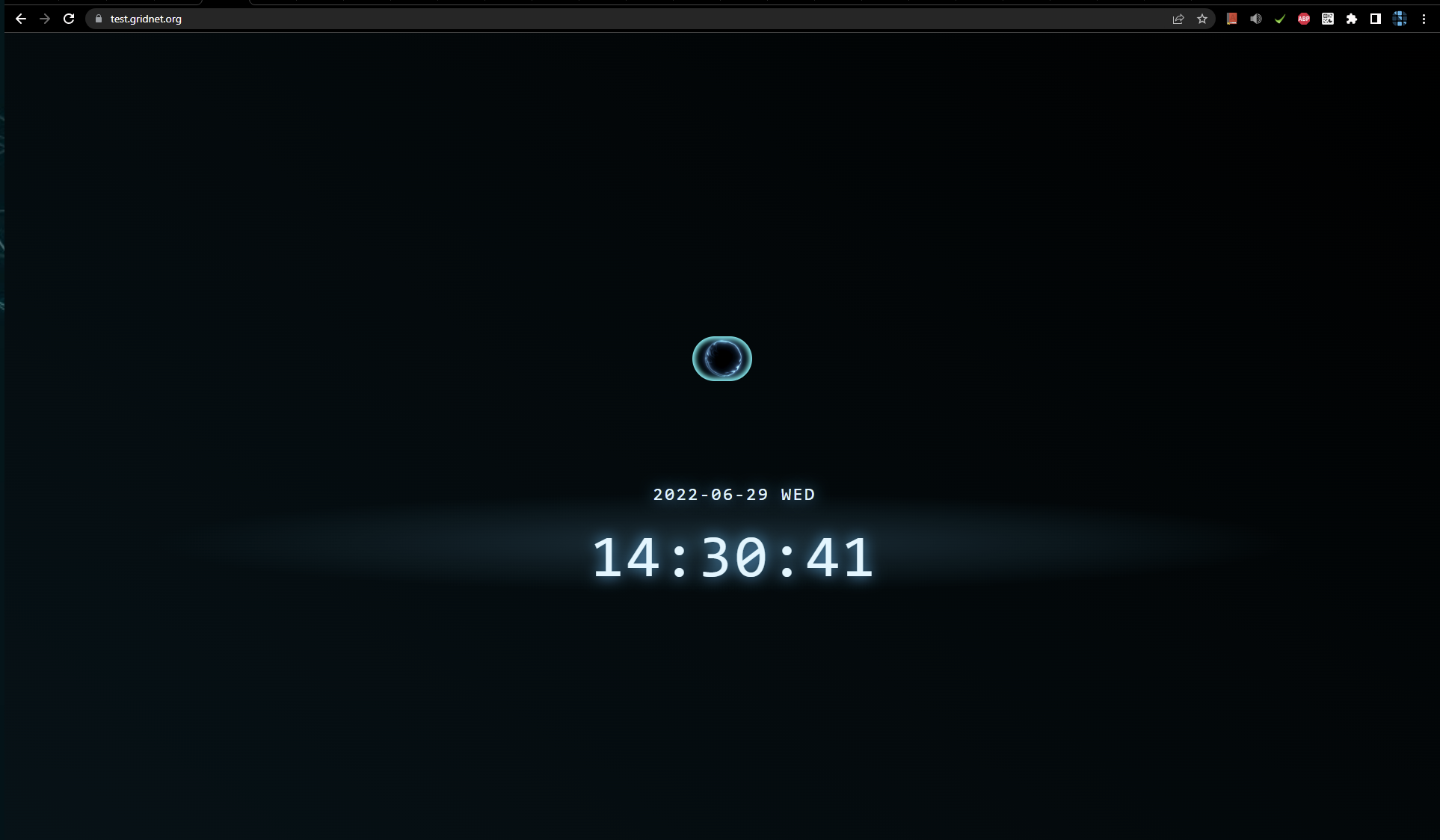
Ready to Launch!
Once and if everything loads properly, the System is ready to invite the user in. Move your mouse around, hover over the halo for some crazy cool effects to finally tap on to to have ⋮⋮⋮GRIDNET OS enter full-screen automatically.
The main rationale of the Bootloader is thus to pre-fetch everything that might be needed to so assure a proper, uninterrupted user experience later on.
Once user loses connectivity with the Internet, at least the Core functionality, along with limited, offline functionality of UI dApps remains available. Connect to the UI , drop internet connectivity and see how it behaves for yourself!
⋮⋮⋮ QR Intents
⋮⋮⋮QR Intent are a way for the system to communicate with you. Meaning with your mobile app. The only trusted element as far as the user is concerned. User may be accessing the system from a café, from someone's else computer, that is always perfectly fine. She may be using an implementation of decentralized YouTube on GRINDET OS, all the peers doing data deliveries would be rewarded, on per-byte-basis, for the fames, individual data packets that they deliver. All in a Sybil-proof manner. All it takes for her to do is to scan a ⋮⋮⋮QR Intent every hour or so. No privacy oriented data would every be left on the computer she accessed the system from. No data that would ever allow for spending of her assets.
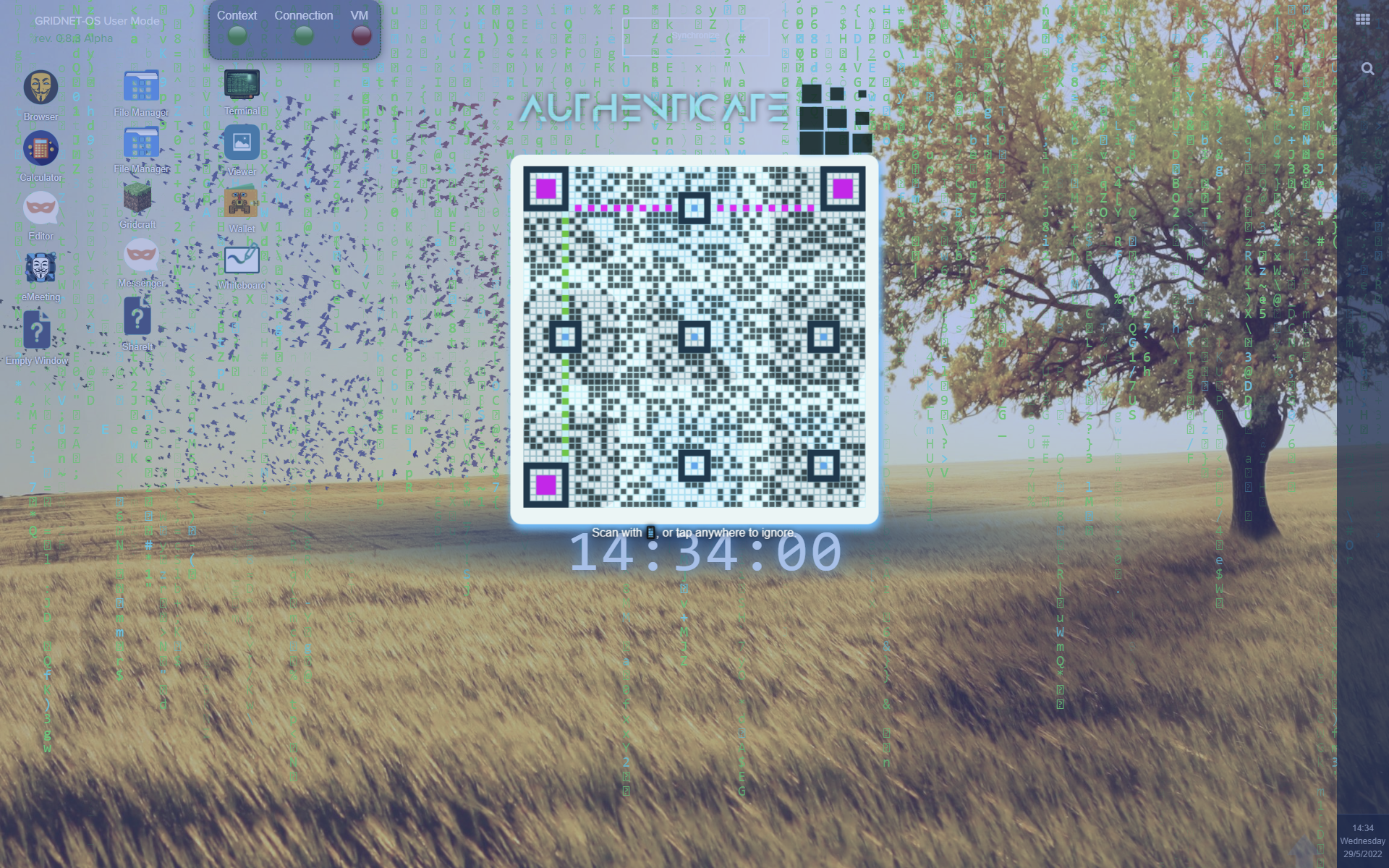
(..)and full-screen certainly it is! 😍
Scan the ⋮⋮⋮QR Intent with your mobil and hop in! The system would remember your preferences, arrangement of icons, installed UI dApps etc. etc. In fact the system provides the Decentralized Settings Manager API to each and every UI dApp allowing for storing of any kind of settings and/or data, the easy way.All of the system UI dApps support the interface.
⋮⋮⋮ Desktop
⋮⋮⋮GRIDNET OS provides. True decentralized operating system experience. No question about that:

Looks like a native, centralized operating system you are used to now does it not:)
Rearrange icons, sort them, resize them, dock them onto the task bar, do whatever you wish!
⋮⋮⋮ Magic Button
Now there are many faces to the ⋮⋮⋮Magic Button (..) It is portal between the user’s experience and extremely sophisticated mechanics acting under the hood.
Willing to synchronize with the current state of the network? Just tap on it. Willing to see pending actions? Hover it. Willing to commit pending actions? You just tap on it when there are any actions pending. That’s it. Simplicity is beautiful and we believe users deserve it.
Some sample faces of it include:

Getting the work done..
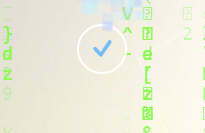
All went fine..
The main idea behind it was to wrap around the decentralized nature of all of the surroundings and make all of the possible actions available at the user’s fingertip. Guess what? We’ve succeeded! It looks and it works outstanding.
⋮⋮⋮ Events Pane
You see it for a moment once the system lets you in, for it to hide away with grace. The Logging API is provided to UI dApps so one may see UI dApp specific event coming in over here as well. The VM Context strives to provides logging both in the standard Chromium’s Developer Pane and within these custom views as well. From the latter you may expect better visualization, formatting etc. You just take a look below

All the events go here. Looking good.
User may toggle through type of events she is interested in. If you are still wondering how to make the Pane visible, there’s a barely visible arrow at the bottom right corner of the screen. Tap on it and it will animate its way into position.
⋮⋮⋮ Window Manager
Window Manager it is not only about the UI itself but about making appropriate Window APIs available to developers. We provide.
Going 2 years back..
Ready for brains-out? We've further improved the #GRIDNET'OS fully decentralized window-manager! 🙃 Recall the similarity between Windows's 10 Window-gestures?🥳Except here.. everything runs within a .. Web-Browser(!!) 🤯#Crypto #fintech #blockchain #technology #security pic.twitter.com/NV2sCpkkfP
— GRIDNET OS (@gridnetproject) August 4, 2020
and since then things inly improved:) Always on YouTube LIVE. The end-result is, that ⋮⋮⋮GRIDNET OS boards a state-of-the-art window manager. Comprising various kinds of mechanics ensuring proper experience in the realm of web-browsers.
⋮⋮⋮ Taskbar
Now we have a separate article on the topic of the Taskbar alone, written by the head of out project so I would not be trying to cover that all over again. It is available right over here.
⋮⋮⋮ Start Menu
Just like one would expect. All the installed UI dApp end-up right over here.
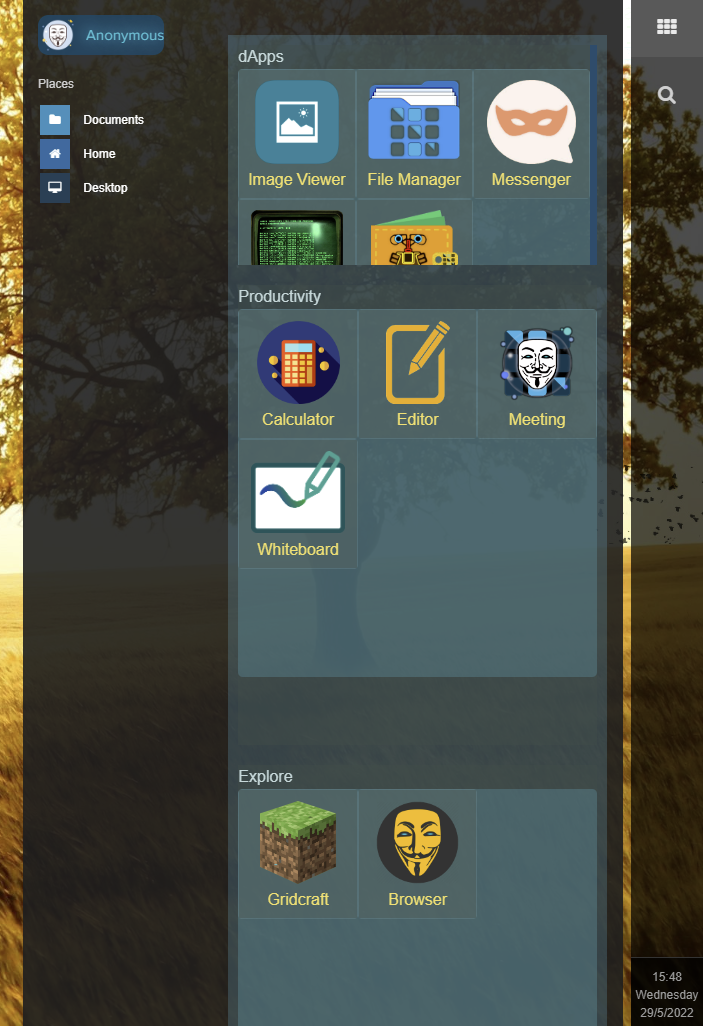
The Start Menu
The Start Menu UI dApp supports the Settings API, so any changes that you make have persistent effect. Drag and drop fully supported all around! Had you logged on through the initially displayed ⋮⋮⋮QR Intent your username would be shown right over here. Now how cool is that!
⋮⋮⋮ UI dApps
Let us face it.. we all got tired of useless crap rolled out on Ethereum. Nobody knows how to use it. Developers need to struggle to make a day. Making their ideas a reality is feel like trying to push an elephant through a needle’s hole. Developers stand one feet in the realm of decentralization, another on centralized products .. multiple of these as a single one would never be enough.. trying not to be torn apart when faced with questions such as: ‘so Mike.. is your piece of software truly decentralized? No? oh.. so why have you developer it at all (..)” and it’s a sudden brains out.
Worry no more though as this time it is ⋮⋮⋮GRIDNET OS which arrives with aid!We have been doing in-house development of a variety of applications involving every kind of interaction we could possibly come up with, putting ourselves in the shoes of future developers to ensure a bullet-proof EXPERIENCE.. for both developers.. and the end-users.
UI dApps are a mixture of technologies developers are already well familiar with. Plus for #GridScript, still, high level instructions are Linux compatible, and lower-level ones are Forth compatible so there are plenty resources to learn from already available all around!
⋮⋮⋮GRIDNET OS delivers all the major sub-systems such as Window-mechanics, storage, data-exchange, decentralized processing threads, user settings, UI-elements, all available through easily accessible JavaScript APIs. From the perspective of JavaScript we distinguish between Kernel Mode and User-Mode API Only the latter are available to UI dApps. ⋮⋮⋮GRIDNET OS ensures proper synchronization among events taking place within the system at all times.
UI dApps employ the ⋮⋮⋮ Curtain API by default. Thus as according to our Venice Design paradigm, all the decentralized aspects of the system shalt be hidden away.
(..) as seen on LIVE, the Curtain mechanics getting polished 🙏🪄#GRIDNET #Crypto #Wizards🧙♂️🧙♀️ #blockchain #DeFi #fintech #BTC #cryptocurrency #security #ICO #JavaScript pic.twitter.com/9UTJUwuQV9
— GRIDNET OS (@gridnetproject) October 14, 2021
Whenever assets needs to be fetched from the network or whenever the View-Model of any UI dApp needs to be rebuilt or rearranged, the ⋮⋮⋮ Curtain would be shown. Notice that it is just barely transparent to make Nerds happy, when one looks close enough once could just see the elements popping in their place. The curtain is shown and generated dynamically (based on the FPS of the current UI dApp and based on changed being done to the UI dApp’s DOM sub-tree). Developers may customize the behaviour through the ⋮⋮⋮ Curtain JavaScript API.
⋮⋮⋮ Walle(t)
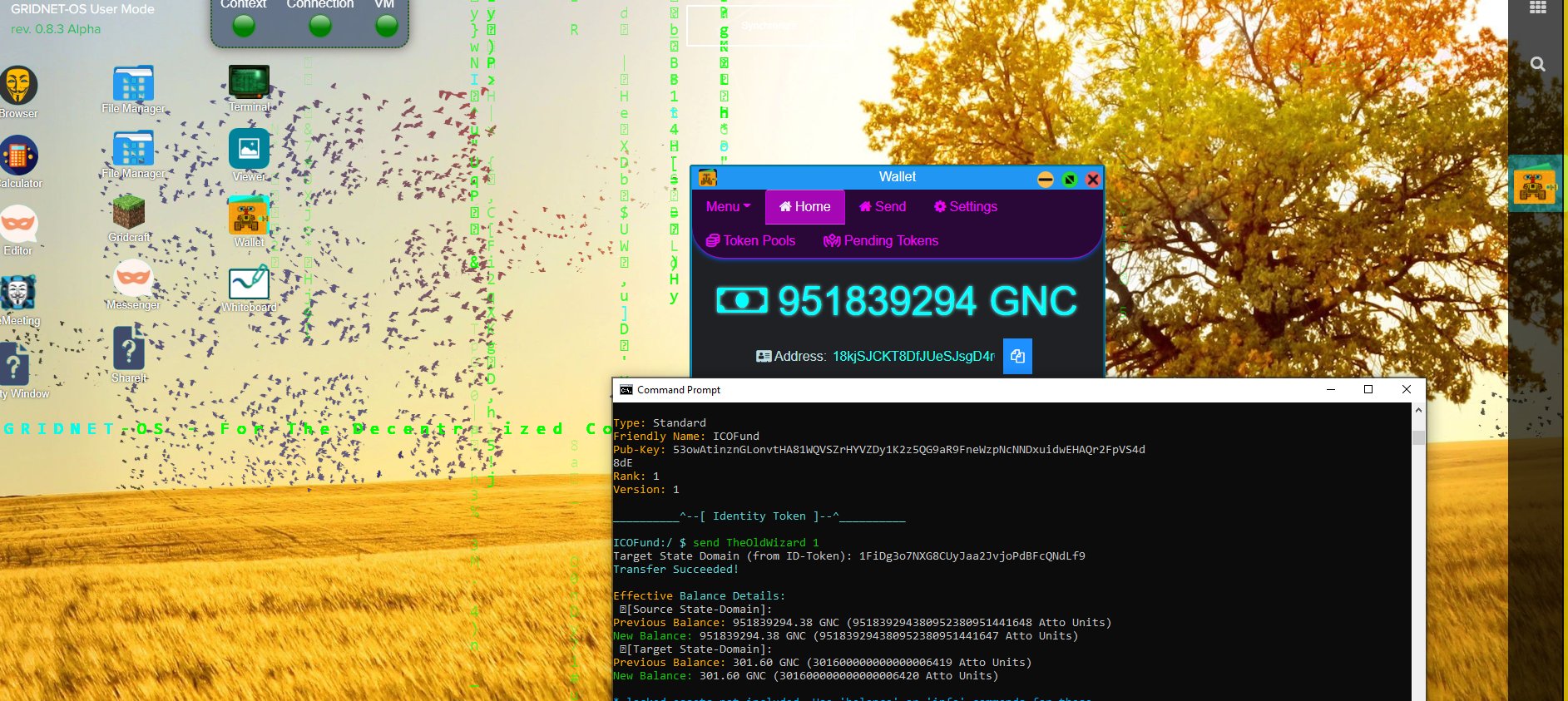
The Walle(t) UI dApp
Allows for both on-the-chain and off-the-chain transactions, detects data-exchange swarms and the currently logged-on user’s ID automatically. If walle(t) detects an active Swarm, it would enable for off-the-chain transactions to its members.
⋮⋮⋮ Terminal
Listen up folks and take a look at what's below 🙂
An instance of an UI Terminal dApp spawned a Processing Thread at a full-node. Single line of code issuing a transfer was dispatched to the thread along with an instruction marking the very thread to be ready for committing.. pic.twitter.com/Ba3BMLaS6Y— GRIDNET OS (@gridnetproject) August 29, 2021
Implemented fully LIVE, as always. Web-GL rendered Virtual Terminal ready to handle any of your desires. Multi-tasking and multi-threading supported. It would notify you about the identifier of a thread it manages to spawn right the very moment it starts.
⋮⋮⋮ GridCraft
Now, how about grabbing a metal detector and setting out on a gold-hunt? Implemented entirely on YouTube LIVE, as always. Dynamic world, generated in a multi-threaded fashion through Web-Workers, real rewards issued through State-Less State-Channels and Multi-Dimensional Token Pools (as per some of our recent, pending research).
Full-nodse take care of real-time processing of users’ positions facilitating very efficient, decentralized anti-cheat mechanics. Would Ethereum deliver? No way!
The metal detector reacts in real time to dynamically generated gold-veins as instructed by nodes comprising the network.
⋮⋮⋮ Browser
State of the art in incentivized data exchange and reverse cors proxy technologies, also equipped with Onion-Routing capabilities. Your Chromium has no slightest idea which web-pages are being viewed right within of the Anonymous Web-Browser UI dApp. All the cross-site-scripting mechanics are effectively mitigated, employing an active man-in-the middle attack between your web-browser and the target web-server. All the data flows through random nodes comprising the network. Always. All the HTML files, CSS files everything. All the JavaScript queries are intercepted. All the anonymity related HTTP headers are dropped and never make their way to the target web-server. The user’s IP address is thus effectively hidden away.
Nothing to install, of course! Hover to to the left to see suggested web-sites, tap on the Wand to customize the looks and feels of any website you visit. The customizations would have persistent effect during your consecutive visits.
For this to be possible, nodes act the level of the TCP protocol, being fully aware of HTTP 1.1 most meticulous details. Content’s compression, decompression (Brotli, GZip etc. all supported) actively taking place being aided by AI. How? The AI would not attempt to decompress or mangle with videos, images etc, while still ensuring that origins of all of the data-sources are modified to ensure that data flows through nodes and so that the anonymity of the user is protected.
⋮⋮⋮ Meeting
How about having Zoom / Skype/ Facebook like conversation capabilities all decentralized, always end-to end encrypted? No problem at all. Decentralized end-to-end encrypted conferencing with video, audio and screen sharing (also the ability to choose specific windows).. without the need to install anything? Sure!
As soon as the app launched, it would ask you to provide an ID of the meeting. Under the hood, it would constitutive an identifier of a crypto-incentivized, onion-routed WebRTC swarm. Provide the identifier to your friends or co-workers to have them join-in.
This UI dApps employs ⋮⋮⋮GRIDNET OS‘ WebRTC Swarms.
⋮⋮⋮ Whiteboard
Once you have established a Swarm (say through the Meeting UI dapp), why don’t you draw together so to better visualize your thoughts and ideas? Simply launch the Whiteboard UI dApp

The App would automatically detect an already established multi-peer session and attach to it.
⋮⋮⋮ File Manager
Now let us wonder, how on earth is that all even possible.
The major work-horse technology are the Decentralized Processing Threads.
The below is an infographic takes from the upcoming research paper.
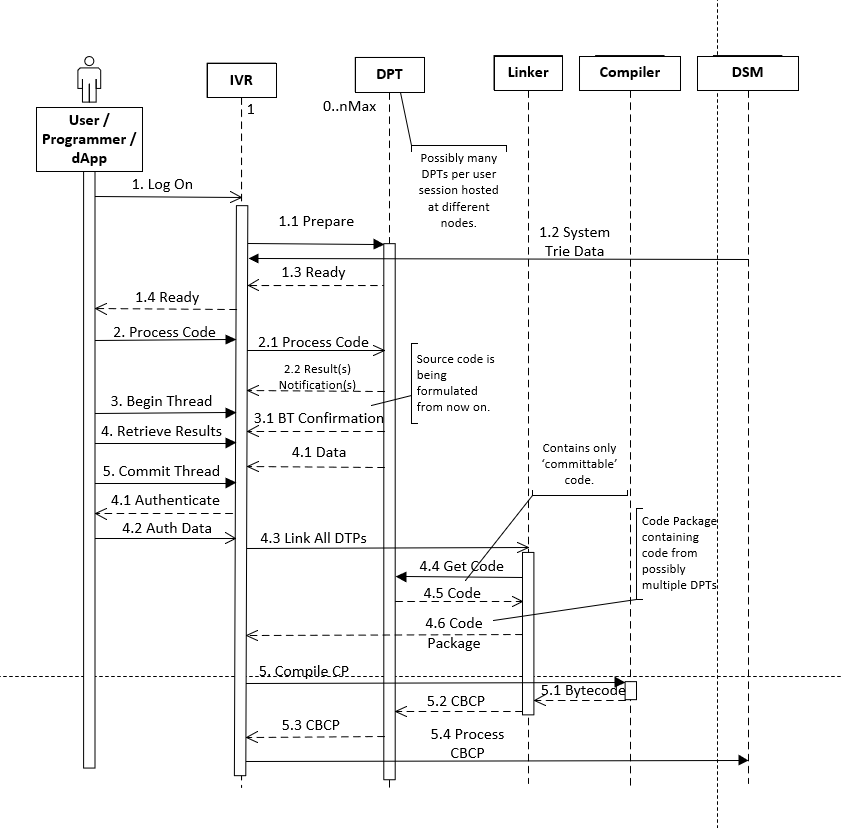
Decentralized Processing Threads
As soon as the user interface boots the system thread is spawned. The sisters Friends on the other hand can have an arbitrary number of sub-threads attached.
Decentralized processing threats can be inherited and passed over across applications.
Does a decentralized processing thread can execute at an arbitrary remote node? Its purpose is to provide services and computations to a graphical decentralized application as per its requests.
The State of a decentralized processing thread can change as a result of instructions executed in its scope.
These changes are signaled to applications that have signed up for appropriate events.
The VM Context is the main building block, from the perspective of decentralized UI applications exposing all the functionalities of ⋮⋮⋮GRIDNET OS through JavaScript based ECMA6 APIs.
Say you fire up the File Manager as soon as you do the app requests a Decentralized Processing Thread to be spawned at one of the full-nodes the VM Context is aware of. As you traverse directories within the user-interface of the File-Manager, under the hood, the app keeps formulating GridScript instructions affecting the current directory. In fact, the app could have formulated GridScript instructions explicitly, but for the sake of simplicity, it employs the File System API passing its instance and the identifier of the DPT it owns.
Notice that the DPT that the File Manager UI dApp requested belongs to this very instance of the File Manager UI dApp. Everything that happens within this thread is only visible in the scope of this very UI dApp. That is, until the thread is shared or changes ownership.
Now, drag and drop a file from your native operating system right onto the File Manager. As soon as this happens, the File Manager is notified of an incoming data stream and shows a file-import Wizard where you get to choose whether to use the Eternal (full-redundancy) or Crowd-Funded storage.
Depending on your choices, the File Manager UI dApp would take it from there.
Within of the decentralized processing thread owned by the app instructions would be formulated resulting in a file being created with the expect content of the file which you’ve just dropped.
This is not a programming tutorial, so we won’t be driving into the most meticulous details. Even still, let us become aware of some inherent problems and imminent Wizardous solutions.
So you’ve created a file. The file wasn’t yet committed to the network. But still you want to edit it before it is. Right within of the ⋮⋮⋮GRIDNET OS . Would that be possible? Yes. How? Once you’ve created /dragged the file, it lives within the context of a particular DPT. The DPT is owned by an instance of the File Manager UI dApp. Now, as you tap or click on the file, the File Manager would request help from the operating system (⋮⋮⋮GRIDNET OS ) in deciding which installed (!) UI dApp to use for handling of the particular file type. Yes, UI dApps may register file handlers based on file extensions and mime-types
The operating system would return an appropriate file handler which can be used to create an instance of the target application which is to open the file you’ve just tapped on.
Now, the instance of a File Manager which you’ve been using would pass a handle to the DPT it owns into the target application. If you’ve created an HTML file, the DPT would be passed over to a newly created instance of the Editor UI dApp. The DPT is now thus being effectively shared across both UI dApps and so both applications have access to the newly created file even though as of now it only lives within the sandbox of this very instance of a DPT.
Each DPT is thus is coupled with a sandboxed realm of the entire state-machine.
⋮⋮⋮ Editor
Now how crazy cool is that? Technology indeed so ahead of what is currently known.
User may create and deploy decentralized websites right from the very instance of ⋮⋮⋮ Editor.
All the changes made to any file are being tracked. Whenever these need to be committed to the decentralized file system, the ⋮⋮⋮Magic Button , it would keep the user notified. What you are finished working with a single (or multiple files) tap onto the ⋮⋮⋮Magic Button and it would take it from here. All that the user evert get to do is to scan a ⋮⋮⋮QR Intent displayed on screen.
If you are a Nerd it would be crazy cool for you to know that.. all the GridScript instructions formulated from within of each thread, under the head are available from the main, decentralized system thread, so one may always launch the Terminal UI dApp, attach to a particular thread and see and/or modify the instructions.. force commitment of these and so and so (..)
What’s Next?
Docs! So to let you create and deploy UI dApps of your own 🙃(Update: a tutorial on how to deploy a Hello Workd UI dApp of your own is already available right over here) What you are looking at is the very first truly decentralized operating system, providing everything a decentralization application developer might ever need! Data-exchange, every kind of storage, incentivization of actions, off-the-chain transactions, beautiful UI mechanics, taking into account the nature of both the decentralized realm and of the web-browsers while still assuring proper experience. It is all there just waiting to accommodate the ideas of yours.


